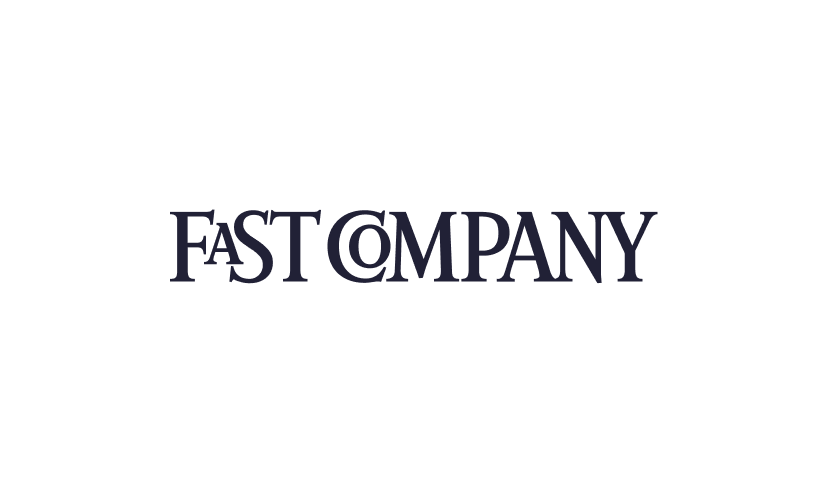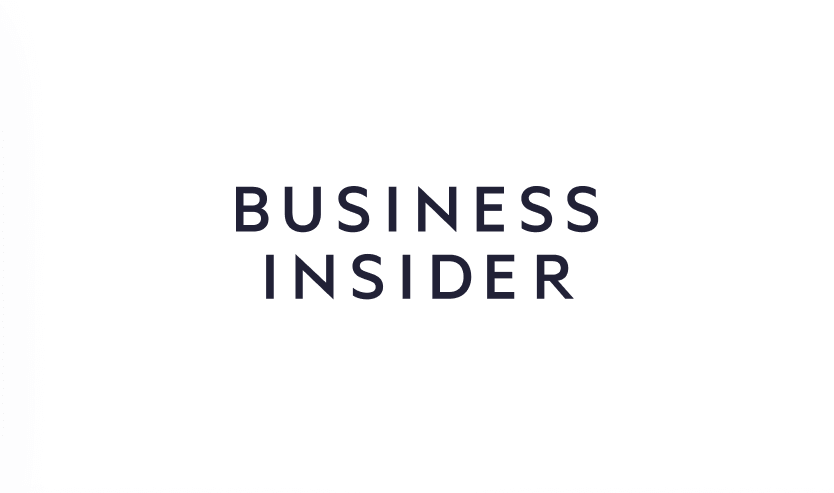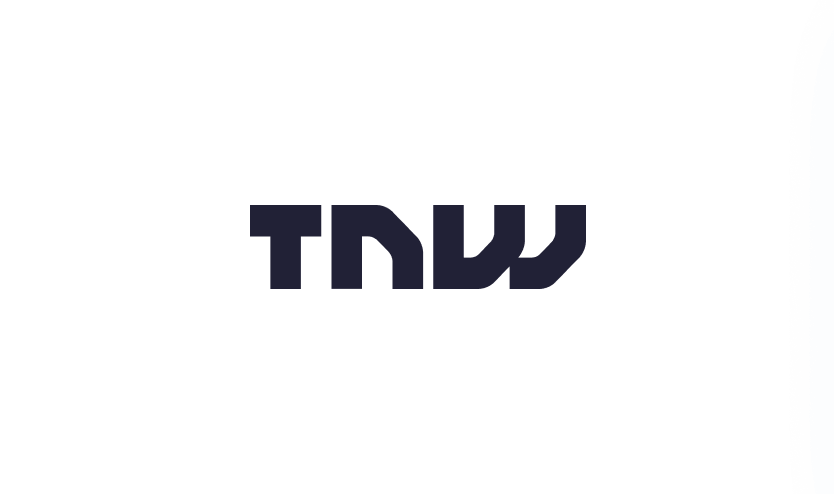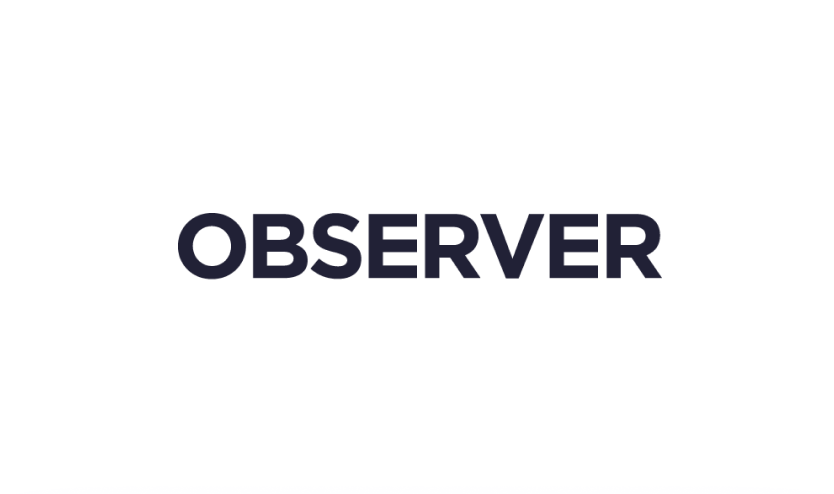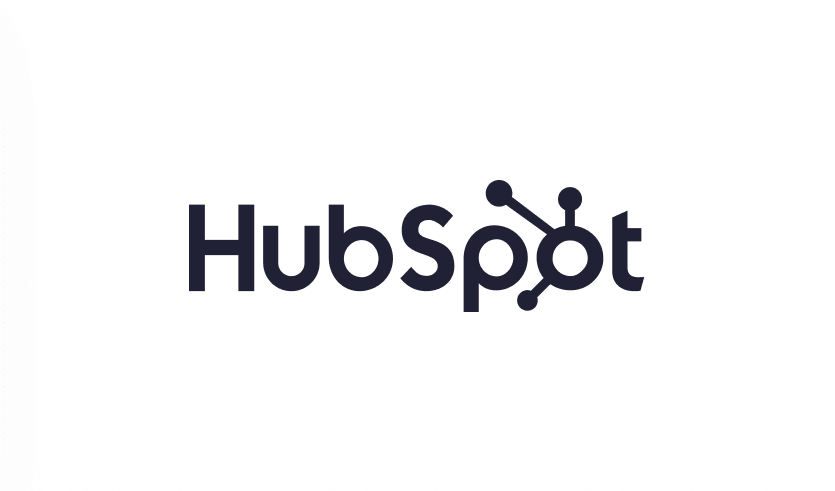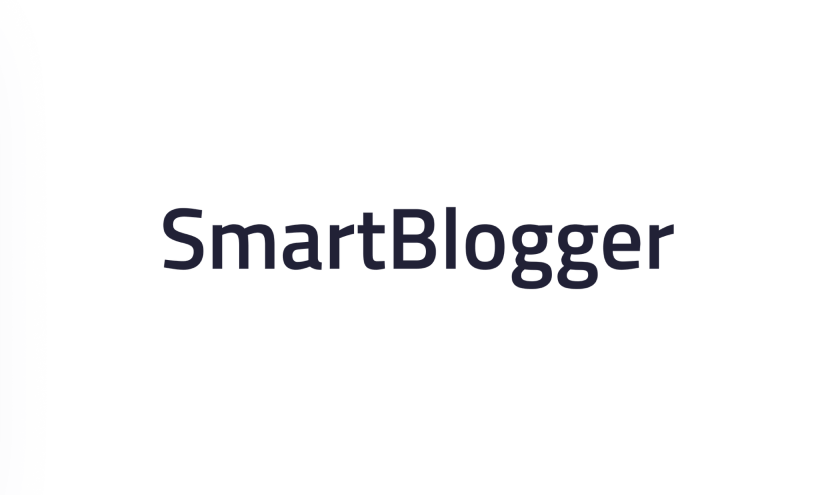Re-engagement Email Examples: 20+ Win-Back Campaigns That Revive Inactive Subscribers and Lapsed Customers
Re-engagement emails achieve 12% average open rates and can recover 5-15% of inactive subscribers—yet 63% of brands never attempt to win back disengaged users, leaving millions in revenue on the table.
The difference between re-engagement campaigns that successfully revive dormant subscribers and those that get ignored comes down to timing, compelling incentives, and understanding why users disengaged in the first place.
I'm Chase Dimond, and over my career managing $200+ million in eCommerce email campaigns for 7-figure, 8-figure, and 9-figure brands, I've developed re-engagement strategies that recover 8-15% of inactive users and generate 5-10% of total email revenue. The best re-engagement emails don't just ask users to come back—they give them compelling reasons to re-engage and make it irresistibly easy.
In this comprehensive guide, I'll share 20+ proven re-engagement email examples, break down the psychology of winning back inactive users, and show you how to build win-back campaigns that turn dormant subscribers into active customers. Plus, I'll reveal how top brands use competitive intelligence tools like Inboox.ai to analyze competitor re-engagement strategies and create campaigns that outperform their market.
Table of Contents
What Are Re-engagement Emails and Why Do They Matter?
The Chase Dimond Re-engagement Framework
When to Send Re-engagement Emails
Incentive-Based Re-engagement Examples
Feedback-Driven Re-engagement Examples
Preference Center Re-engagement Examples
Content-Value Re-engagement Examples
Final Goodbye Re-engagement Examples
List Hygiene and Sunset Strategies
Common Re-engagement Mistakes
FAQ: Re-engagement Email Best Practices
What Are Re-engagement Emails and Why Do They Matter?
Re-engagement emails (also called win-back emails) are strategic campaigns designed to reactivate subscribers who have stopped engaging with your emails. They're your last attempt to revive the relationship before removing inactive users from your list.
Signs a subscriber needs re-engagement:
No email opens in 60-90 days
No clicks in 90-120 days
No purchases in 90-180 days (ecommerce)
No app usage in 30-60 days
No website visits from email in 90+ days
Why Re-engagement Emails Are Critical
Business impact:
Revenue recovery: Win-back campaigns generate 5-10% of total email revenue
Reactivation rates: Well-executed campaigns recover 8-15% of inactive users
List health: Removing non-engagers improves deliverability by 15-25%
Cost savings: Reactivating existing subscribers costs 5x less than acquiring new ones
Sender reputation: Clean lists protect email deliverability
Throughout my work with 7-figure, 8-figure, and 9-figure eCommerce brands, I've found that brands with systematic re-engagement programs have 20-30% better overall email performance due to improved list quality and sender reputation.
The Cost of Ignoring Inactive Subscribers
What happens when you don't re-engage:
Deliverability decline: ISPs see low engagement, send more emails to spam
Revenue loss: Miss opportunity to recover 8-15% of inactive users
List decay: Inactive subscribers become dead weight
Wasted sends: Paying to email people who never open
Reputation damage: High inactive percentage hurts all campaigns
Chase's Re-engagement Principle: "Inactive subscribers are expensive liabilities or untapped revenue opportunities. The difference is whether you try to win them back before giving up. Always try to reactivate before removing."
The Chase Dimond Re-engagement Framework
After developing win-back campaigns for dozens of high-revenue brands, I've created a systematic approach:
The 4-Stage Re-engagement System
Stage 1: Early Warning (30-60 days inactive)
Identify declining engagement
Send subtle re-engagement nudge
Offer value or content reminder
No aggressive tactics yet
Stage 2: Direct Re-engagement (60-90 days inactive)
Clear "we miss you" messaging
Meaningful incentive offered
Ask what went wrong
Make comeback easy
Stage 3: Last Chance (90-120 days inactive)
Final opportunity messaging
Best offer you can give
Clear consequence (removal)
Preference center option
Stage 4: Sunset (120+ days inactive)
Remove from active list
Move to suppression list
Final goodbye option to stay
Clean list for better performance
The Chase Dimond Reactivation Value Formula: Reactivation Value = (Recovery Rate × Average Customer LTV) - (Cost of Inactive Sends × Inactive Duration). Optimize recovery rate while minimizing inactive send costs.
Re-engagement Timing Strategy
Based on my $200+ million in campaigns, here's optimal timing by subscriber type:
Ecommerce customers:
60 days: Early nudge
90 days: Direct win-back with incentive
120 days: Final chance
150 days: Sunset/remove
Newsletter subscribers:
45 days: Early nudge
90 days: Direct re-engagement
120 days: Final chance
150 days: Sunset/remove
SaaS/App users:
30 days: Early nudge (shorter cycle)
60 days: Direct re-engagement
90 days: Final chance
120 days: Sunset/remove
Key insight: Higher-value customers get longer grace periods and more aggressive win-back attempts.
When to Send Re-engagement Emails
Defining "Inactive"
Engagement-based definition (most common):
No opens in past 60-90 days
No clicks in past 90-120 days
No conversions in past 90-180 days
Behavior-based definition (more sophisticated):
Historical engagement decline >50%
No website visits from email in 90+ days
Repeated email ignoring (received 10+ emails, opened 0)
Value-based definition (for high-value customers):
Different thresholds based on customer lifetime value
VIP customers: 120+ days before re-engagement
Regular customers: 90+ days
Low-value: 60+ days
Chase's Inactive Definition Rule: "Define inactive based on your typical purchase/engagement cycle. B2C fashion: 60-90 days. High-ticket B2B: 180+ days. Match your re-engagement timing to your customer behavior patterns."
Segmenting Your Re-engagement Campaigns
Segment by engagement history:
Previously highly engaged (50%+ open rate)
Previously moderate (20-50% open rate)
Never really engaged (<20% open rate)
Segment by customer value:
VIP/high LTV customers (aggressive win-back)
Regular customers (standard win-back)
One-time buyers (gentle win-back)
Never purchased (remove faster)
Segment by reason for inactivity (if known):
Subscription fatigue (too many emails)
Content irrelevance (wrong fit)
Life circumstances (moved, changed jobs)
Competitive defection (went to competitor)
Incentive-Based Re-engagement Examples
Incentive-driven campaigns use offers to motivate comeback.
Example 1: The Generous Discount Win-Back
Use case: Lapsed ecommerce customers (90+ days)
Email structure:
━━━━━━━━━━━━━━━━━━━━━━━━
We miss you, [First Name]
It's been a while since you last shopped with us.
━━━━━━━━━━━━━━━━━━━━━━━━
WELCOME BACK GIFT
━━━━━━━━━━━━━━━━━━━━━━━━
Here's 25% off to say we're sorry:
━━━━━━━━━━━━━━
CODE: COMEBACK25
Expires in 7 days
━━━━━━━━━━━━━━
[Shop Now Button]
━━━━━━━━━━━━━━━━━━━━━━━━
WHAT YOU'VE MISSED:
━━━━━━━━━━━━━━━━━━━━━━━━
Since you've been gone, we've added:
✓ [New product category/feature]
✓ [Improvement or update]
✓ [Customer-requested addition]
━━━━━━━━━━━━━━━━━━━━━━━━
BESTSELLERS RIGHT NOW:
━━━━━━━━━━━━━━━━━━━━━━━━
[Product 1] [Product 2] [Product 3]
[Images and prices]
━━━━━━━━━━━━━━━━━━━━━━━━
NOT INTERESTED?
━━━━━━━━━━━━━━━━━━━━━━━━
[Update email preferences]
[Unsubscribe]
No hard feelings if we're not a fit anymore.
━━━━━━━━━━━━━━━━━━━━━━━━
What makes it effective:
Generous offer: 25% is hard to ignore
No excuses: "We're sorry" acknowledges absence
What's new: Shows progression since they left
Product showcase: Reminds of what they're missing
Easy exit: Respectful unsubscribe option
Performance benchmarks:
Open rate: 10-15%
Click rate: 4-7%
Conversion rate: 2-5%
Reactivation rate: 8-12%
Key elements:
Significant discount (20-30% range)
Time-limited offer (creates urgency)
"What's new" section (shows progress)
Featured products (specific comeback targets)
Preferences/unsubscribe (respects their choice)
When to send: 90 days of inactivity
Example 2: The Free Shipping Comeback
Use case: Shipping-sensitive customers
Email structure:
━━━━━━━━━━━━━━━━━━━━━━━━
Free shipping. No minimum. Just for you.
[First Name], we want you back.
━━━━━━━━━━━━━━━━━━━━━━━━
YOUR EXCLUSIVE OFFER
━━━━━━━━━━━━━━━━━━━━━━━━
FREE SHIPPING
No minimum purchase required
━━━━━━━━━━━━━━
CODE: FREESHIP
Valid for 5 days
━━━━━━━━━━━━━━
[Start Shopping Button]
━━━━━━━━━━━━━━━━━━━━━━━━
THIS WEEK'S FAVORITES:
━━━━━━━━━━━━━━━━━━━━━━━━
[Curated product selection]
━━━━━━━━━━━━━━━━━━━━━━━━
RISK-FREE RETURNS
━━━━━━━━━━━━━━━━━━━━━━━━
Not sure about coming back? We offer:
✓ 30-day free returns
✓ Free return shipping
✓ Full refund, no questions asked
━━━━━━━━━━━━━━━━━━━━━━━━
What makes it effective:
High-value offer: Free shipping often beats % discount
No minimum: Lower barrier to entry
Risk reduction: Returns policy removes hesitation
Curated selection: Easier than browsing full catalog
Short window: 5 days creates urgency
Performance benchmarks:
Reactivation rate: 6-10%
Average order value: Often lower (no minimum)
Repeat purchase rate: Similar to discount win-backs
Example 3: The Mystery Discount
Use case: Gamification for re-engagement
Email structure:
━━━━━━━━━━━━━━━━━━━━━━━━
🎁 Your mystery discount awaits
We miss you, [First Name]!
Click to reveal your special comeback offer:
━━━━━━━━━━━━━━━━━━━━━━━━
[Scratch-off graphic or reveal button]
YOUR DISCOUNT IS:
[Click to Reveal Button]
━━━━━━━━━━━━━━━━━━━━━━━━
Possibilities:
• 15% off
• 20% off
• 25% off
• Free shipping
• Buy 1 Get 1 Free
━━━━━━━━━━━━━━━━━━━━━━━━
REVEAL YOUR OFFER NOW
━━━━━━━━━━━━━━━━━━━━━━━━
[Reveal My Discount Button]
Offer expires in 72 hours
━━━━━━━━━━━━━━━━━━━━━━━━
What makes it effective:
Curiosity: Must click to see offer
Gamification: Fun, interactive experience
Guaranteed value: All outcomes are good
Urgency: 72-hour expiration
Engagement boost: Drives clicks to see offer
Performance benchmarks:
Open rate: 12-18% (curiosity subject line)
Click rate: 8-15% (must click to reveal)
Conversion rate: 3-6%
Technical implementation: Link goes to landing page that reveals their specific discount code.
Feedback-Driven Re-engagement Examples
Feedback campaigns ask why they left and show you care.
Example 4: The "We Miss You, What Went Wrong?" Email
Use case: Understanding disengagement reasons
Email structure:
━━━━━━━━━━━━━━━━━━━━━━━━
[First Name], we noticed you're gone
Hi [First Name],
You haven't opened our emails in a while, and
we're wondering why.
━━━━━━━━━━━━━━━━━━━━━━━━
QUICK QUESTION (takes 5 seconds):
━━━━━━━━━━━━━━━━━━━━━━━━
Why did you stop engaging?
[One-click feedback buttons:]
→ Emails too frequent
→ Content not relevant
→ Found what I needed elsewhere
→ Too expensive
→ Just browsing, not ready to buy
→ Other reason (tell us)
Your feedback helps us improve.
━━━━━━━━━━━━━━━━━━━━━━━━
WANT TO GIVE US ANOTHER CHANCE?
━━━━━━━━━━━━━━━━━━━━━━━━
Here's 20% off if you're willing to come back:
CODE: COMEBACK20
[Shop Now Button]
━━━━━━━━━━━━━━━━━━━━━━━━
NOT INTERESTED?
━━━━━━━━━━━━━━━━━━━━━━━━
[Update preferences] or [Unsubscribe]
━━━━━━━━━━━━━━━━━━━━━━━━
What makes it effective:
Shows you care: Genuinely wants feedback
Easy response: One-click options
Multiple touchpoints: Feedback + incentive + exit
Actionable data: Learn why people leave
Respectful tone: No guilt or pressure
Performance benchmarks:
Open rate: 10-14%
Feedback rate: 20-30% of openers
Reactivation rate: 5-8%
Key insight: Feedback data is valuable even if they don't reactivate. Use it to improve for current subscribers.
Example 5: The Personalized "Did We Do Something Wrong?"
Use case: Previously high-value customers
Email structure:
━━━━━━━━━━━━━━━━━━━━━━━━
[First Name], did we let you down?
Hi [First Name],
I noticed you haven't been back since [Date of
last purchase/engagement].
As someone who [previous positive behavior - e.g.,
"bought from us 5 times"], your absence matters to us.
━━━━━━━━━━━━━━━━━━━━━━━━
DID SOMETHING GO WRONG?
━━━━━━━━━━━━━━━━━━━━━━━━
If you had a bad experience, I want to make it
right. Hit reply and tell me what happened.
━━━━━━━━━━━━━━━━━━━━━━━━
OR, LET US WIN YOU BACK:
━━━━━━━━━━━━━━━━━━━━━━━━
30% off your next order - our best offer ever
CODE: VIPCOMEBACK
[Shop Now Button]
━━━━━━━━━━━━━━━━━━━━━━━━
JUST NOT A FIT ANYMORE?
━━━━━━━━━━━━━━━━━━━━━━━━
That's okay. [Unsubscribe link]
Thanks for being a customer.
Best,
[Founder/Team Member Name]
[Title]
━━━━━━━━━━━━━━━━━━━━━━━━
What makes it effective:
Personal tone: From real person, not brand
Acknowledges history: References past relationship
Problem-solving: Offers to fix issues
Best offer: 30% for high-value customers
Graceful exit: Respectful goodbye option
Performance benchmarks:
Open rate: 15-20% (personal from-name helps)
Reply rate: 5-10% (some share issues)
Reactivation rate: 10-15%
Best practice: Use for customers with 3+ previous purchases or high lifetime value.
Preference Center Re-engagement Examples
Preference-based campaigns give control to subscribers.
Example 6: The "Too Many Emails?" Solution
Use case: Frequency fatigue
Email structure:
━━━━━━━━━━━━━━━━━━━━━━━━
Are we emailing you too much?
Hi [First Name],
We noticed you haven't been opening our emails
lately. Maybe we're emailing too often?
━━━━━━━━━━━━━━━━━━━━━━━━
LET'S FIX THIS:
━━━━━━━━━━━━━━━━━━━━━━━━
How often would you like to hear from us?
□ Daily (what we send now)
□ 2-3x per week
□ Once a week
□ Monthly highlights only
[Update My Preferences Button]
━━━━━━━━━━━━━━━━━━━━━━━━
OR, TELL US WHAT YOU WANT:
━━━━━━━━━━━━━━━━━━━━━━━━
Select the content you want:
□ New arrivals
□ Sales and promotions
□ Style tips and inspiration
□ Exclusive subscriber perks
□ Product launches
[Save My Preferences Button]
━━━━━━━━━━━━━━━━━━━━━━━━
NOT INTERESTED AT ALL?
━━━━━━━━━━━━━━━━━━━━━━━━
[Unsubscribe] - We'll miss you!
━━━━━━━━━━━━━━━━━━━━━━━━
What makes it effective:
Acknowledges problem: Too many emails
Gives control: Multiple frequency options
Content selection: Choose what matters
Easy to update: Simple preference interface
Saves relationship: Rather than losing them
Performance benchmarks:
Open rate: 12-18%
Preference update rate: 25-35%
Unsubscribe rate: 15-20% (but better than ignoring)
Re-engagement rate: 40-50% of preference updaters
Key insight: Many "inactive" subscribers just want fewer emails, not zero emails.
Example 7: The Content Preferences Reset
Use case: Content relevance issues
Email structure:
━━━━━━━━━━━━━━━━━━━━━━━━
Let's start over, [First Name]
We haven't been sending you relevant content.
Let's fix that.
━━━━━━━━━━━━━━━━━━━━━━━━
WHAT INTERESTS YOU?
━━━━━━━━━━━━━━━━━━━━━━━━
(Select all that apply)
□ [Interest/category 1]
□ [Interest/category 2]
□ [Interest/category 3]
□ [Interest/category 4]
□ [Interest/category 5]
[Update My Interests Button]
━━━━━━━━━━━━━━━━━━━━━━━━
TELL US MORE ABOUT YOU:
━━━━━━━━━━━━━━━━━━━━━━━━
I'm interested in:
□ Products for [demographic 1]
□ Products for [demographic 2]
□ Products for [demographic 3]
My budget range:
□ Under $50
□ $50-$100
□ $100-$200
□ $200+
━━━━━━━━━━━━━━━━━━━━━━━━
ONE MORE THING:
━━━━━━━━━━━━━━━━━━━━━━━━
As a thank you for updating your preferences,
here's 15% off your next order.
CODE: NEWSTART15
[Save & Shop Button]
━━━━━━━━━━━━━━━━━━━━━━━━
What makes it effective:
Fresh start: "Start over" is appealing
Comprehensive profiling: Multiple preference types
Relevance promise: Will send better content
Incentive: Discount for updating
Personalization: Better emails going forward
Performance benchmarks:
Preference update rate: 30-40%
Re-engagement rate: 45-55% of updaters
Content-Value Re-engagement Examples
Value-driven campaigns remind of benefits without selling.
Example 8: The "Here's What You're Missing" Email
Use case: Demonstrating ongoing value
Email structure:
━━━━━━━━━━━━━━━━━━━━━━━━
You're missing out, [First Name]
Since you last opened our emails, here's what
other subscribers have loved:
━━━━━━━━━━━━━━━━━━━━━━━━
TOP 3 ARTICLES:
━━━━━━━━━━━━━━━━━━━━━━━━
1. [Article headline]
[Brief teaser]
[Read now →]
2. [Article headline]
[Brief teaser]
[Read now →]
3. [Article headline]
[Brief teaser]
[Read now →]
━━━━━━━━━━━━━━━━━━━━━━━━
MOST POPULAR PRODUCTS:
━━━━━━━━━━━━━━━━━━━━━━━━
[Product 1] [Product 2] [Product 3]
★★★★★ (500) ★★★★★ (400) ★★★★★ (350)
"Best purchase "Love it!" "Amazing"
ever!"
━━━━━━━━━━━━━━━━━━━━━━━━
EXCLUSIVE SUBSCRIBER PERKS:
━━━━━━━━━━━━━━━━━━━━━━━━
Here's what you still have access to:
✓ Early access to sales
✓ Exclusive subscriber discounts
✓ Free shipping on $X+ orders
✓ Birthday month 20% off
━━━━━━━━━━━━━━━━━━━━━━━━
[Continue Getting Value Button]
Not interested? [Unsubscribe]
━━━━━━━━━━━━━━━━━━━━━━━━
What makes it effective:
FOMO: Shows what they missed
Social proof: Popular content/products
Value reminder: Subscriber benefits list
No hard sell: Value-first approach
Choice: Continue or unsubscribe
Performance benchmarks:
Open rate: 8-12%
Click rate: 3-6%
Re-engagement rate: 5-8%
Example 9: The Educational Value Reminder
Use case: Newsletter/content-driven lists
Email structure:
━━━━━━━━━━━━━━━━━━━━━━━━
We miss you in our community, [First Name]
You haven't been reading lately, and we wanted
to remind you why you joined...
━━━━━━━━━━━━━━━━━━━━━━━━
WHAT YOU SIGNED UP FOR:
━━━━━━━━━━━━━━━━━━━━━━━━
[List original value proposition that got them
to subscribe]
━━━━━━━━━━━━━━━━━━━━━━━━
OUR PROMISE TO YOU:
━━━━━━━━━━━━━━━━━━━━━━━━
Every week, we deliver:
✓ [Value point 1]
✓ [Value point 2]
✓ [Value point 3]
No fluff. Just actionable insights.
━━━━━━━━━━━━━━━━━━━━━━━━
RECENT FAVORITE:
━━━━━━━━━━━━━━━━━━━━━━━━
[Featured high-performing piece of content]
[Read This Now →]
━━━━━━━━━━━━━━━━━━━━━━━━
GIVE US ONE MORE CHANCE:
━━━━━━━━━━━━━━━━━━━━━━━━
[Continue My Subscription Button]
Or [update how often you hear from us]
━━━━━━━━━━━━━━━━━━━━━━━━
What makes it effective:
Reminds of intent: Why they originally subscribed
Reaffirms value: What they get
Best content: Showcase high-quality example
Frequency option: Maybe too frequent
No sales pitch: Pure value focus
Performance benchmarks:
Open rate: 10-15%
Re-engagement rate: 6-10%
Final Goodbye Re-engagement Examples
Last-chance campaigns before removal.
Example 10: The Final Goodbye Email
Use case: Last attempt before removal (120+ days)
Email structure:
━━━━━━━━━━━━━━━━━━━━━━━━
Subject: This is goodbye, [First Name]
━━━━━━━━━━━━━━━━━━━━━━━━
Hi [First Name],
This is our final email to you.
━━━━━━━━━━━━━━━━━━━━━━━━
WHAT'S HAPPENING:
━━━━━━━━━━━━━━━━━━━━━━━━
You haven't opened our emails in [X] days, so
we're going to remove you from our list in
7 days.
We respect your inbox and don't want to send
unwanted emails.
━━━━━━━━━━━━━━━━━━━━━━━━
WANT TO STAY?
━━━━━━━━━━━━━━━━━━━━━━━━
Click below to stay subscribed:
[Yes, Keep Me Subscribed Button]
━━━━━━━━━━━━━━━━━━━━━━━━
AS A FINAL GIFT:
━━━━━━━━━━━━━━━━━━━━━━━━
If you stay, here's 30% off:
CODE: FINALCHANCE30
Valid for 7 days
[Stay Subscribed & Shop Button]
━━━━━━━━━━━━━━━━━━━━━━━━
GOODBYE:
━━━━━━━━━━━━━━━━━━━━━━━━
If we don't hear from you, you'll be removed
in 7 days.
Thanks for being part of our community.
Best,
[Brand Team]
P.S. - You can always re-subscribe later at
[Website URL]
━━━━━━━━━━━━━━━━━━━━━━━━
What makes it effective:
Clear consequence: Removal in 7 days
Respectful tone: No guilt or pressure
Final incentive: Best offer (30%)
Easy to stay: Single click
Graceful exit: Thanks for past engagement
Performance benchmarks:
Open rate: 8-12% (curiosity about goodbye)
Reactivation rate: 4-8%
Actual removal: 92-96% (most don't respond)
Key insight: This email has dual purpose—last chance reactivation + list cleaning announcement.
Example 11: The "Break-Up" Email
Use case: Humorous final goodbye
Email structure:
━━━━━━━━━━━━━━━━━━━━━━━━
Subject: It's not you, it's... actually, it's you
━━━━━━━━━━━━━━━━━━━━━━━━
Dear [First Name],
We need to talk.
You haven't opened an email from us in months.
We've sent you [X] emails. You opened zero.
We get it. You're just not that into us.
━━━━━━━━━━━━━━━━━━━━━━━━
SO HERE'S THE DEAL:
━━━━━━━━━━━━━━━━━━━━━━━━
We're going to stop emailing you.
Not because we don't care, but because we
respect your inbox.
━━━━━━━━━━━━━━━━━━━━━━━━
UNLESS...
━━━━━━━━━━━━━━━━━━━━━━━━
You click this button in the next 5 days:
[I Actually Want Your Emails Button]
━━━━━━━━━━━━━━━━━━━━━━━━
AND IF YOU DO CLICK:
━━━━━━━━━━━━━━━━━━━━━━━━
Here's 25% off for giving us another shot:
CODE: SECONDCHANCE
━━━━━━━━━━━━━━━━━━━━━━━━
READY TO PART WAYS?
━━━━━━━━━━━━━━━━━━━━━━━━
That's okay. We'll miss you.
You can always come back: [Website URL]
Goodbye,
[Brand Team]
━━━━━━━━━━━━━━━━━━━━━━━━
What makes it effective:
Humorous tone: Breaks pattern, gets attention
Direct language: Acknowledges reality
Clear deadline: 5 days to respond
Incentive: 25% off for staying
No hard feelings: Friendly goodbye
Performance benchmarks:
Open rate: 12-18% (subject line curiosity)
Reactivation rate: 6-12%
Best for: Brands with casual, humorous voice. Not appropriate for luxury/serious brands.
List Hygiene and Sunset Strategies
The Sunset Policy Framework
What is a sunset policy? A systematic process for identifying and removing persistently inactive subscribers to maintain list health.
The Chase Dimond Sunset Timeline:
60 days inactive:
Identify declining engagement
Send early re-engagement nudge
No removal yet
90 days inactive:
Send main win-back campaign (3-email sequence)
Offer significant incentive
Ask for feedback
120 days inactive:
Send final goodbye email
Give 7-day window to stay
Best offer possible
127 days inactive (7 days after goodbye):
Remove from active list
Move to suppression/sunset segment
Stop all email sends
Exception for high-value customers:
Extend timeline by 30-60 days
More aggressive win-back attempts
Personal outreach from team
Sunset Segment Strategy
What to do with sunset subscribers:
Option 1: Complete Removal
Remove from all lists
Add to suppression list (never email again)
Use for: Never-purchased, low-value subscribers
Option 2: Reduced Frequency
Quarterly re-engagement attempts
Send only major promotions
Use for: Previously engaged, moderate value
Option 3: Indefinite Suppression
Never email again unless they re-subscribe
Keep in database for re-targeting (ads)
Use for: Explicitly unengaged after multiple win-backs
Chase's Sunset Philosophy: "A clean list of 10,000 engaged subscribers is infinitely more valuable than 50,000 subscribers where 30,000 never open. Protect your sender reputation by removing dead weight ruthlessly."
List Hygiene Benefits
Deliverability improvements:
15-25% better inbox placement
Lower spam complaint rates
Improved sender reputation
ISPs reward engagement
Performance improvements:
20-30% higher open rates (denominator shrinks)
15-20% higher click rates
More accurate performance data
Better segmentation insights
Cost savings:
Lower ESP costs (charged per subscriber)
Reduced waste on dead addresses
Better ROI per send
Common Re-engagement Mistakes
After analyzing thousands of win-back campaigns through Inboox.ai, here are the most common mistakes:
Mistake 1: Waiting Too Long
The mistake: Not attempting re-engagement until 180+ days inactive
Why it fails:
Relationship too cold
They've completely forgotten you
Lower recovery rates
Wasted sends in meantime
The fix:
Start at 60-90 days
Multiple touchpoints over 60 days
Earlier intervention = higher recovery
Data: 90-day inactive users reactivate at 10-12%. 180-day users reactivate at 2-4%.
Mistake 2: Weak Incentives
The mistake: Offering same 10% off as regular promotions
Why it fails:
Not compelling enough to overcome inertia
Doesn't match inactivity "cost"
Same as what active subscribers get
The fix:
20-30% off (meaningfully better)
Free shipping no minimum
Exclusive "win-back only" offers
Best discount you can afford
Chase's Incentive Rule: "Win-back offers should be noticeably better than regular promotions. If an inactive subscriber can get the same deal by waiting, you've failed."
Mistake 3: No Feedback Request
The mistake: Just trying to sell, not understanding why they left
Why it fails:
Miss learning opportunity
Can't fix underlying problems
Repeat same mistakes
No improvements for active subscribers
The fix:
Ask "why did you stop engaging?"
One-click feedback options
Actually use feedback to improve
Share what you learned/changed
Mistake 4: Guilt-Tripping Language
The mistake: Making subscribers feel bad for not engaging
Why it fails:
Pushes people away
Creates negative association
Feels manipulative
Increases unsubscribes
Bad examples:
"Why don't you love us anymore?"
"You're breaking our heart"
"We thought we had something special"
The fix:
Respectful, understanding tone
Acknowledge their choice
No pressure or guilt
Graceful exit option
Mistake 5: No Clear Next Step
The mistake: Vague "come back" without specific action
Why it fails:
Unclear what to do
No compelling reason
No urgency
Easy to ignore
The fix:
Single clear CTA
Specific action (shop, update preferences, click to stay)
Time-limited offer
Easy to execute
Mistake 6: Never Cleaning Your List
The mistake: Keeping inactive subscribers forever
Why it fails:
Kills deliverability
Wastes money
Skews metrics
Damages sender reputation
The fix:
Systematic sunset policy
Remove after final win-back attempt
Clean list quarterly
Protect engaged subscribers' experience
Impact: List cleaning improves deliverability by 15-25% for remaining subscribers.
Analyzing Competitor Re-engagement Strategies
Want to see how competitors win back inactive users? Use Inboox.ai to analyze competitor re-engagement campaigns.
Inboox.ai allows you to track competitor email strategies including their win-back sequences. This gives you:
Re-engagement timing (when they attempt win-back)
Incentive strategies (discount depth, offers)
Messaging approaches (tone, language)
Sequence length (how many attempts)
Design and formatting choices
I recommend using Inboox.ai to analyze 10-15 competitor re-engagement campaigns to identify:
Industry standards for win-back timing
Incentive benchmarks (typical discount depths)
Messaging approaches that resonate
Sequence sophistication (single email vs. multi-touch)
Opportunities to differentiate
For more re-engagement strategies, subscribe to my email marketing newsletter where I break down winning win-back campaigns.
FAQ: Re-engagement Email Best Practices
When should I send re-engagement emails?
Optimal timing by subscriber type:
Ecommerce customers:
60 days: First gentle nudge
90 days: Main win-back campaign
120 days: Final chance
150 days: Remove from list
Newsletter subscribers:
45 days: First nudge (shorter cycle)
90 days: Win-back campaign
120 days: Final chance
150 days: Remove
SaaS/app users:
30 days: Early intervention (shorter cycle)
60 days: Win-back
90 days: Final chance
120 days: Remove
High-value customers: Add 30-60 days to each stage.
Chase's Timing Rule: "Start re-engagement at 2x your average purchase/engagement cycle. If customers typically buy every 30 days, re-engage at 60 days of inactivity."
How many re-engagement emails should I send?
Recommended sequence:
Minimum (basic program):
1 email at 90 days
1 final goodbye at 120 days
Total: 2 emails
Standard (most brands):
1 email at 60 days
1 email at 90 days
1 final goodbye at 120 days
Total: 3 emails
Aggressive (high-value customers):
1 email at 60 days
2-3 emails at 90 days (spaced 7-10 days apart)
1 final goodbye at 120 days
Total: 4-5 emails
Don't overdo it: More than 5 win-back emails risks annoying recipients and damaging reputation.
What incentive should I offer in win-back emails?
Incentive benchmarks by type:
Discount-based:
Regular win-back: 20-25% off
Final chance: 25-30% off
VIP customers: 30-40% off
Non-discount alternatives:
Free shipping (no minimum)
Buy one get one free
Free gift with purchase
Early access to sale
Exclusive product access
Choosing incentive depth:
Higher than regular promotions (15-20% min better)
Based on customer lifetime value (more for VIPs)
Competitive with acquisition costs
Best you can afford for final attempt
Chase's Incentive Formula: Win-back discount should be (Regular Promotion % + 10%) minimum. If you typically offer 15% off, win-back should be 25%+.
Should I remove subscribers who don't re-engage?
Yes, absolutely.
Why you must remove inactive subscribers:
Deliverability protection:
ISPs track engagement rates
Low engagement = spam folder
Hurts ALL your emails
Damages sender reputation
Cost savings:
ESP pricing based on list size
Stop paying for dead addresses
Redirect budget to engaged users
Accurate metrics:
True performance visibility
Better segmentation
Improved testing
Real ROI calculations
When to remove:
After 120-150 days inactive
After final goodbye email (7-day grace period)
Immediately if hard bounce
After 2-3 win-back attempts fail
Exception: High lifetime value customers can get longer grace period (180+ days).
Can I re-subscribe someone who was removed?
Yes, but with important caveats:
If they unsubscribed:
Never re-subscribe without explicit opt-in
CAN-SPAM violation
Heavy fines possible
Reputation damage
If you sunset them (inactivity removal):
Can re-subscribe if they explicitly opt in again
Must use same signup process as new subscribers
Clear about what they're signing up for
Not automatic or implied
Best practice:
Make re-subscription easy (signup form on website)
Don't automatically re-add
Treat as new subscriber
Fresh start with onboarding
How do I know if my re-engagement campaign is working?
Key performance indicators:
Reactivation rate:
Formula: (Subscribers who re-engage / Total recipients) × 100
Good: 8-15%
Average: 5-8%
Poor: <5%
Revenue recovery:
Purchases from reactivated subscribers
Compare to acquisition cost
Track 30-day post-reactivation value
List health improvement:
Overall open rate improvement after cleaning
Deliverability metrics
Spam complaint rate reduction
Engagement sustainability:
30-day retention of reactivated users
Do they stay engaged?
Or fall off again quickly?
Cost-benefit analysis:
Reactivation Value = (Reactivation Rate × Average LTV) - (Campaign Cost + Inactive Send Costs)
Chase's Success Metric: "A successful re-engagement program reactivates 8-12% of inactive users at a cost lower than new acquisition. Plus, improved deliverability for remaining list."
What's the best subject line for re-engagement emails?
High-performing subject line patterns:
Direct approach:
"We miss you, [First Name]"
"[First Name], are you still there?"
"It's been a while..."
Incentive-led:
"Here's 25% off to come back"
"Your exclusive win-back offer"
"We want you back - 30% off inside"
Curiosity:
"Is this goodbye, [First Name]?"
"One last thing before you go..."
"Final email from us"
Feedback:
"Quick question for you"
"Did we do something wrong?"
"Why did you stop opening our emails?"
Best performers: Direct + incentive combination Example: "We miss you - here's 25% off"
Avoid:
Generic "We miss you" (overused)
Guilt-tripping language
ALL CAPS or excessive punctuation
Misleading clickbait
Key Takeaways: Re-engagement Email Success
Essential principles for high-performing win-back campaigns:
✅ Start at 60-90 days: Don't wait too long
✅ Meaningful incentives: 20-30% off minimum
✅ Multi-touch sequence: 2-3 attempts over 60 days
✅ Ask for feedback: Learn why they left
✅ Respect their choice: Easy exit option
✅ Clean your list: Remove after final attempt
✅ Measure reactivation: Track recovery rate
✅ Learn from competitors: Use Inboox.ai for benchmarking
Final Thoughts
Re-engagement emails are your last opportunity to recover inactive subscribers before they become permanent list dead weight. Well-executed win-back campaigns can recover 8-15% of inactive users while cleaning your list improves deliverability by 15-25% for engaged subscribers.
The re-engagement strategies I've shared have helped brands recover millions in revenue from dormant subscribers while simultaneously improving their email program performance through better list hygiene. These are the same approaches behind $200+ million in managed campaigns for 7-figure, 8-figure, and 9-figure brands.
The brands that win with re-engagement are those that:
Act early: Start at 60-90 days, not 180+
Offer generously: Win-back incentives beat regular promotions
Listen actively: Ask for and use feedback
Respect boundaries: Make unsubscribing easy
Clean ruthlessly: Remove non-engagers to protect deliverability
Learn continuously: Use Inboox.ai for competitive intelligence
Ready to build win-back campaigns that recover inactive subscribers? Subscribe to my newsletter for weekly re-engagement strategies, win-back sequence breakdowns, and list hygiene tactics.
And if you want to see how competitors handle re-engagement and benchmark your win-back offers, check out Inboox.ai—it's the competitive intelligence tool I use to analyze re-engagement campaigns and identify best practices.
Now go win back those inactive subscribers. Every dormant user is either a revenue recovery opportunity or list health liability. Make sure you try to reactivate before removing, but always remove before they damage your deliverability.
About Chase Dimond
Chase Dimond is an email marketing expert who has managed over $200+ million in eCommerce email campaigns for 7-figure, 8-figure, and 9-figure brands. He specializes in building re-engagement programs that recover inactive subscribers, improve list health, and maximize email program ROI. Subscribe to his newsletter for weekly re-engagement strategies and email marketing insights.

